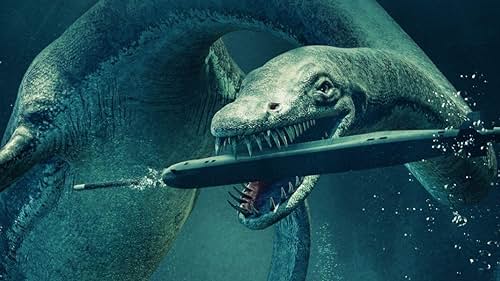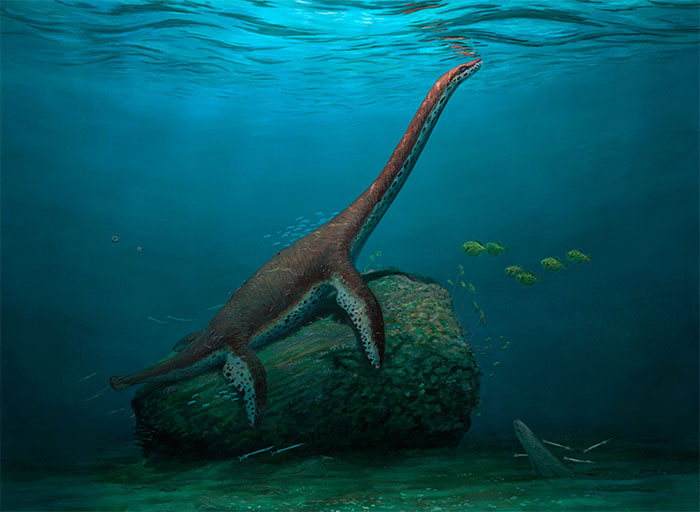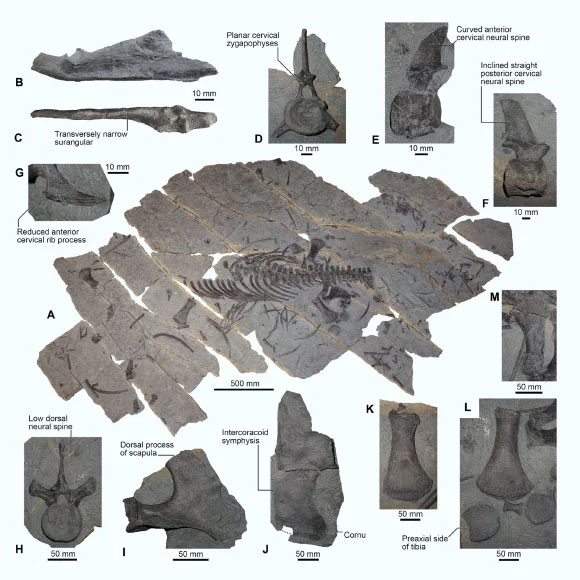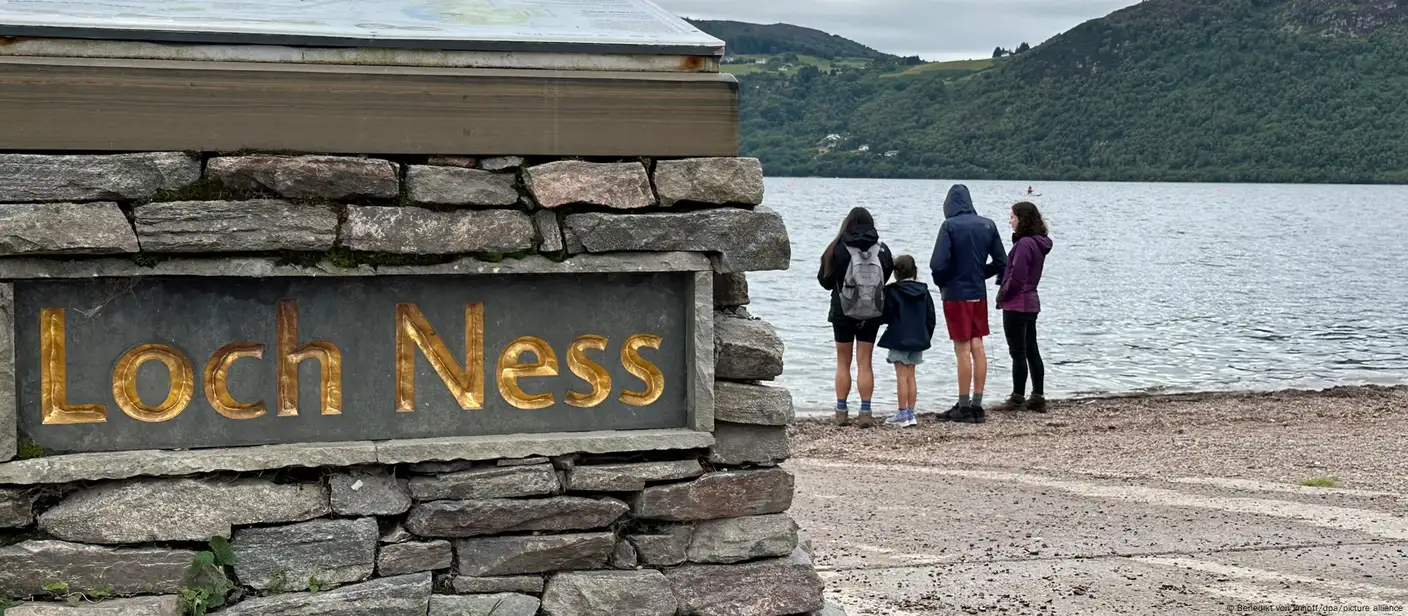Two fossilized monster skeletons found in Bavaria – Germany have written the name of a species and a new genus into the “genealogy” of snake-necked lizards .

The Loch Ness monster is said to be related to the Plesiosaur, a group of ancient marine reptiles, because it shares the same characteristics of a monstrous long neck and giant elongated body. The same goes for two creatures recently unearthed in Germany.
According to Sci-News, the new species is named Franconiasaurus brevispinus and belongs to a completely new genus.
 “Portrait” of a new monster – (Photo: Joschua Knüppe).
“Portrait” of a new monster – (Photo: Joschua Knüppe).
The age of the two specimens (two exquisitely preserved, three-dimensional skeletons) is about 175 million years old, meaning they lived in the early Jurassic period of the Jurassic period.
“Throughout their evolutionary history of more than 140 million years, snake-necked lizards have dispersed globally, achieved remarkable diversity, occupied many ecological niches, and undergone many faunal transitions” – Dr. Sven Sachs from the Naturkunde Bielefeld Museum, main author of the study, said.
 The remains of two Jurassic monsters – (Photo: Frontiers in Earth Science).
The remains of two Jurassic monsters – (Photo: Frontiers in Earth Science).
Also according to research published in the scientific journal Frontiers in Earth Science, the transition period between the Early Jurassic and Middle Jurassic geological epochs (175 to 171 million years ago) profoundly affected all three main lineages. of snake-necked lizards.
One of those three lineages, the Rhomaleosauridae, soon became extinct around 161.5 million years ago, while the other two emerged stronger.
Pliosauridae formed a group of giant carnivores that dominated marine ecosystems 171 to 90 million years ago.
Meanwhile, smaller Plesiosauroidea crept from the ocean around present-day Europe and spread throughout the world, until being replaced by competing species in the early Cretaceous period.
Returning to the two specimens found, they are excellent representative species that lived at the beginning of the Early Jurassic – Middle Jurassic transition period, which can contribute to explaining how the three snake-necked lizard lineages then changed. change.
This new species of sea monster shows a combination of features from Earth’s first snake-necked lizards with many that followed.

Their two fossilized skeletons were unearthed as a stroke of luck from an abandoned clay mining pit in the Jurensismergel Formation in the Bavarian town of Mistelgau.





